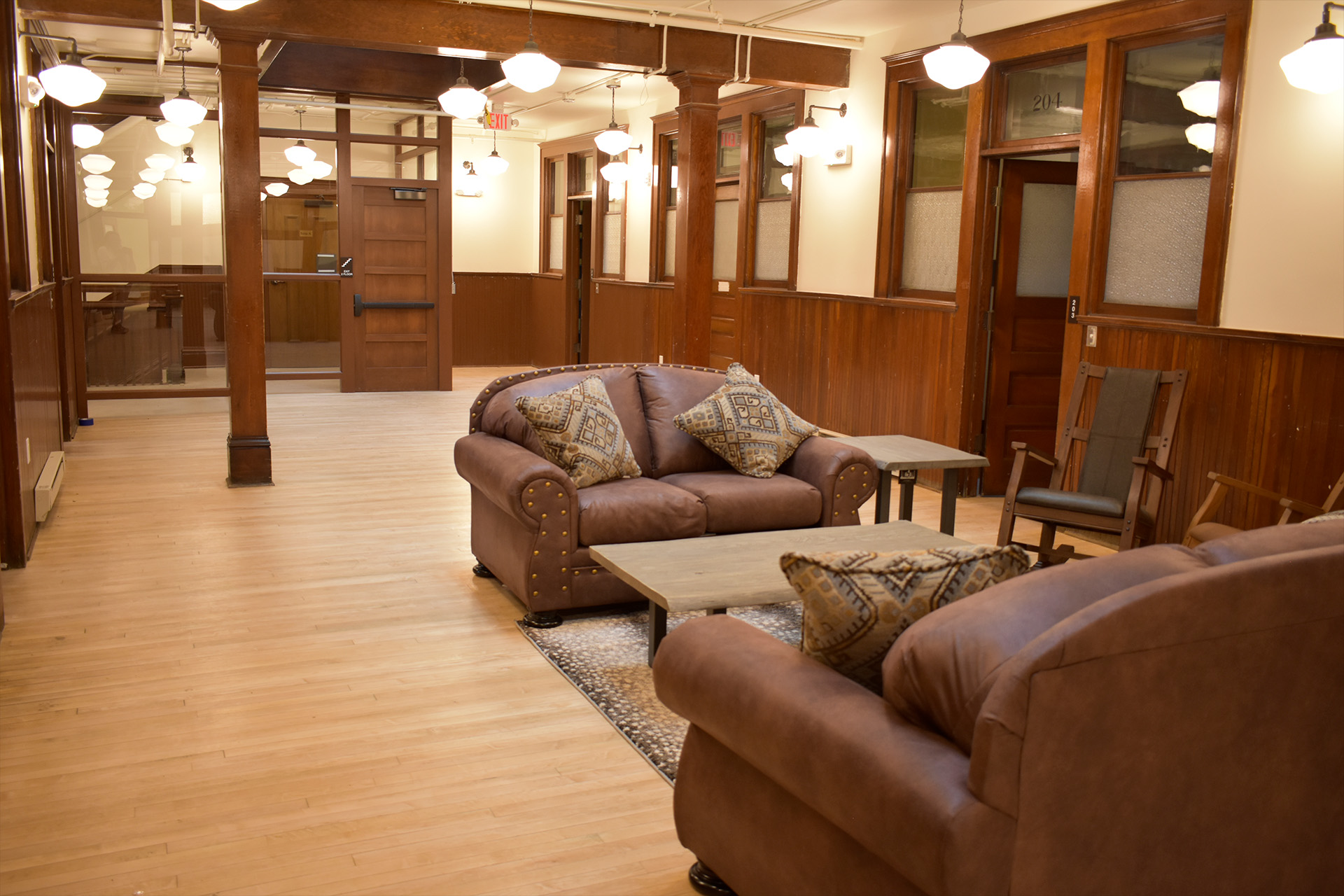Lewistown’s Crowley Block Approved for Historic Preservation Tax Credits

In a milestone win for historic preservation, affordable healthcare, and affordable housing in Montana, the National Park Service last month certified the rehabilitation of the historic Crowley Block at 311 West Main Street in Lewistown for the Federal Historic Preservation Tax Incentives Program.
Technical assistance from the State Historic Preservation Office (SHPO), a program of the Montana Historical Society, ensured that the project met the criteria for certification.
With the support of private investors, Missoula-based nonprofit Homeword collaborated on the development with One Health. Homeword adapted the second and third floors of the 1913 building to create Crowley Flats. The two floors include 16 homes, ranging in size from studios to two-bedroom apartments. One Health, a Federally Qualified Health Center with clinics throughout central Montana and northern Wyoming, adapted the other spaces in the building. One Health turned the ground floor, mezzanine and basement into a full-service medical and dental clinic.
“We knew from our previous historic preservation and adaptive reuse work in the state that communities like Lewistown need rental homes for people of all incomes,” said Homeword Project Development Director Heather McMilin. “We were so excited when the folks from One Health called us and asked us if we would be interested in turning the upper two floors at the Crowley Block into homes that people earning lower incomes could afford to rent.”
Homeword and One Health preserved the building while maintaining and restoring the critical components that make it unique, such as the original facades, interior woodwork, wood floors, high ceilings, and other characteristics.
Administered by the National Park Service, the Federal Historic Preservation Tax Incentives Program provides property owners with a dollar-for-dollar income tax credit for 20% of their total rehabilitation costs. Eligible properties must be listed in the National Register of Historic Places, be used for an income-producing purpose, and remain depreciable for five years after certification.
“The federal tax credit helps to level the playing field and incentivizes redevelopment of historic properties when the cost to do so exceeds that of new construction,” noted Lindsey Tran, a Historic Architecture Specialist with SHPO. “All work must meet the Secretary of the Interior’s Standards for Rehabilitation, a set of best practices that guide rehabilitation projects in a way that preserves a building’s historic character.”
Since 1990, investors have put nearly $94 million toward the rehabilitation of historic income-producing properties across the state. In return, they have received nearly $19 million back in federal tax credits.
Montana offers a state income tax credit for an additional 5% of the project’s total rehabilitation costs. Projects certified for the federal tax credit are automatically eligible for the state tax credit, with no additional application process. The state tax credit went into effect in 1997, and since then investors across 67 certified projects have been eligible for $6.4 million in state tax credits.
“The development and rehabilitation of homes that Montanans can afford to rent has gotten more expensive and challenging to accomplish with limited funding sources in Montana,” McMilin said. “The global pandemic and ongoing labor shortages in the construction industry have hit Montana particularly hard.”
Homeword used equity syndicated by Redstone Equity Partners from the sale of federal tax credits as well as Federal Low-Income Housing Tax Credits allocated by Montana Housing. The organization also used federal grants, a HUD HOME Investment Partnerships Program grant awarded by Montana Housing and the Department of Commerce, an Affordable Housing Program (AHP) grant from the Federal Home Loan Bank of Des Moines, Tax Increment Financing (TIF) from the City of Lewistown, and a private foundation grant from the Steele-Reese Foundation.
While Homeword’s tax credit partnership was unable to use the state tax credit to generate equity, One Health was able to use equity from state tax credits to support the construction of the clinic and the restoration of the exterior of the building.
“State credit is a critical piece of the puzzle in doing these historic adaptive reuse projects and preserving our heritage,” McMilin said.
Contacts:
Lindsay Tran, Historic Architecture Specialist, State Historic Preservation Office: 406.444.7717
Andi Armstrong, Communications Manager, Homeword: 406.532.4663 x15